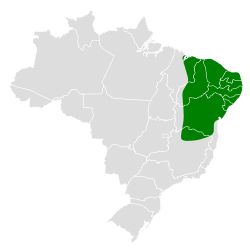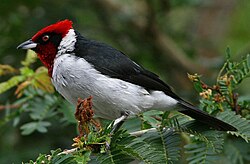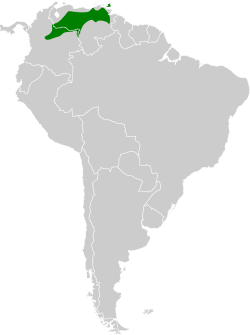| Paroaria | |
|---|---|
 | |
| Top left: Paroaria coronata Top right: Paroaria dominicana | |
 | |
| Paroaria coronata in Buenos Aires, Argentina | |
| Scientific classification | |
| Domain: | Eukaryota |
| Kingdom: | Animalia |
| Phylum: | Chordata |
| Class: | Aves |
| Order: | Passeriformes |
| Family: | Thraupidae |
| Genus: | Paroaria Bonaparte, 1832 |
| Type species | |
| Fringilla cucullata [1] =Loxia coronata Vieillot | |
| Species | |
See text | |

Paroaria, the red-headed cardinals or cardinal-tanagers (as they are not close to the Cardinalidae), are a genus of tanagers. They were until recently placed in the family Emberizidae.
Five or six species are placed here. They are all very similar-looking birds, with heads resembling that of a northern cardinal (Cardinalis cardinalis, a true member of the Cardinalidae), though they are somewhat more slender (in particular their rather tanager-like bill).
Their coloration is also typical; they are quite unlike any Cardinalidae, though they bear a passing resemblance to adult male rose-breasted grosbeak (Pheucticus ludovicianus). Like these, they are white below and dark above (grey to blackish in the case of Paroaria). But unlike P. ludovicianus, they have no conspicuous pattern except for the head, which has large amounts of bright red; it may be predominantly so or patterned red-and-black. Almost all Paroaria have at least a short crest. The bill is yellowish below or in its entirety.












